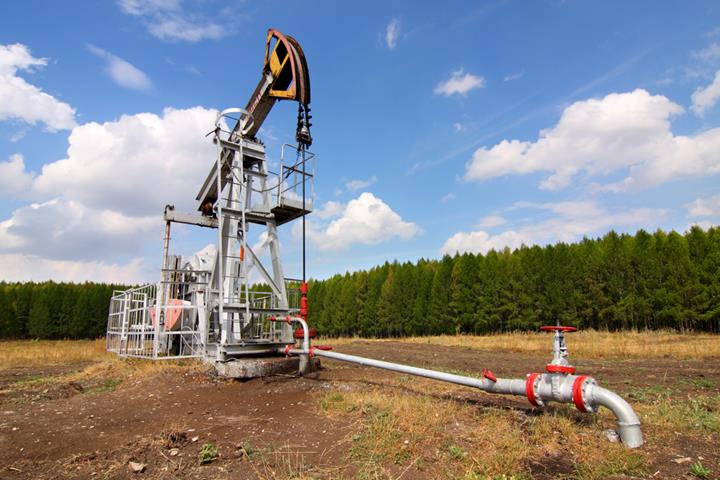Over the past few years, global oil production has continued to rise. However, this has forced the market into oversupply and caused oil prices to decrease in value. With that said, in 2016, the Organization of the Petroleum Exporting Countries and 11 other countries who are major producers of oil decided to cut production, which boosted investor sentiment.
This deal required for the production of oil to decrease by roughly 1.8 million barrels a day, and at the time, financial experts estimated that this agreement could cause oil prices to rise. But, due to rising oil production in the United States, oil prices have been kept under control.
As a result, many oil-focused investors are looking to find out which countries in the world produce the most oil. Based on the statistics from the Energy Information Administration, here is an overview of the top 10 oil-producing countries in the world for 2016.
1. The United States of America
Despite experiencing a production decrease from 15,123,000 barrels per day in 2015 to 14,827,000 barrels per day in 2016, the United States still managed to produce the most oil in comparison to other countries. The United State’s shale industry, which produces oil shale (a fine-grained sedimentary rock), rebounded in 2016 and OilPrice.com noted that the US rig count climbed in the second half of 2016.
Additionally, according to the EIA, the United States consumed 7.19 billion barrels of petroleum products in 2016. This equals to an average of 19.63 million bpd.
2. Saudi Arabia
Saudi Arabia, a country which posses 18% of the world’s petroleum reserves and ranks, had an output of 12,387,000 barrels per day in 2016. This is considerably higher than its output of 12,072,000 bpd in 2015. The Middle Eastern country’s oil and gas sectors account for 50% of its GDP as well as roughly 85% of its export earnings.
As mentioned, in 2016, the OPEC decided to cut oil production, and Saudi Arabia played a defining role in this decision. Currently, Saudi Arabia has decided to continue cutting oil production even past their expiry in June.
3. Russia
According to the EIA, Russia is the world’s largest producer of oil and the second-largest producer of dry natural gas. This is not a surprise as their oil production has increased significantly over the years. It went from 11,030,000 barrels per day in 2015 to 11,240,000 barrels per day in 2016. Russia has most of its oil reserves in West Serbia, located between the Ural Mountains and the Central Siberian Plateau. Additionally, they have another oil reserve in the Urals-Volga region, which extends into the Caspian Sea.
4. China
China is the world’s second-largest consumer of oil, but, the country’s annual oil production has decreased over the past few years. It went from 5,157,000 barrels per day in 2015 to 4,874,000 barrels per day in 2016. China is recognized as being the world’s most populated country, which has led to an ever-increasing demand for energy.
5. Canada
Canada has had significant advances in oil production, boosting its output from 4,511,000 barrels per day in 2015 to 4,568,000 barrels per day in 2016.
According to the government of Alberta, most of Canada’s oil reserves are located in their province and 97% of their oil reserves are in the form of oil sands. Even though the majority of Canada’s total energy exports come from energy exports to the United States, Canada is currently working on expanding its ties with markets in Asia, in an attempt to diversify their partners in trade.
6. Iraq
Iraq holds oil reserves at 144 billion barrels, which represents roughly 18% of the reserves in the Middle East and 9% of global reserves. Last year, Iraq increased its oil outputs by almost 400,000 barrels per day. Oil production went from 4,050,000 bpd in 2015 to 4,448,000 bpd in 2016.
7. Iran
Similar to Iraq, Iran increased its production of oil in 2016. Production went from 3,447,000 barrels per day in 2015 to 4,138,000 bpd in 2016. Despite having the world’s fourth-largest oil reserves and the second-largest natural gas reserve, Iran has seen a significant decline in oil output in recent years. Additionally, growth in natural gas production has been much slower than was expected.
8. United Arab Emirates
As a member of the OPEC, the United Arab Emirates saw an increase in oil production from 3,673,000 barrels per day in 2015 to 3,765,000 barrels per day in 2016. With most oil reserves located in Abu Dhabi, the United Arab Emirates has the world’s seventh-largest oil reserve at 97.8 billion barrels.
9. Brazil
According to the EIA, Brazil’s total primary energy consumption has doubled in the past decade, due to sustained economic growth. However, Brazil saw a decline in oil production in 2016, producing 2,016,000 barrels per day. Most of Brazil’s total energy consumption comes from oil, liquid fuels, natural gas, and hydroelectricity.
10. Kuwait
Along with Kuwait’s oil and gas sector accounting for roughly 60$ of the country’s GDP and 95% of its revenues of exports, Kuwait saw an increase in oil production in 2016. Production went from 2,952,000 barrels per day in 2015 to 3,072,000 barrels per day.
Featured Image: depositphotos/PavelSh











